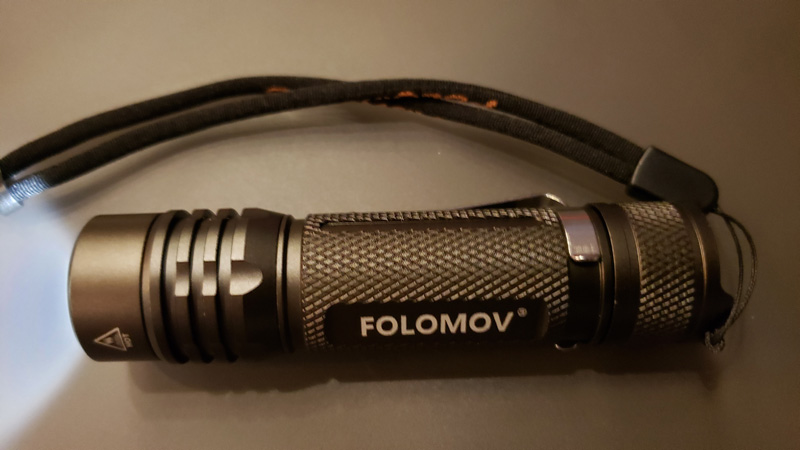
REVIEW – Lots of folks have an “every day carry” (EDC) kit – things that they take with every day so they are prepared for whatever the day may throw at them. For many, a flashlight is one of those things that go in the kit. The Folomov 18650S is a new contender for an EDC flashlight. Is it worth your consideration? Read on!
What is it?
The Folomov 18650S is a compact flashlight with 15 operational modes. It carries an IPX8 rating, so it should be impervious to everyday water risks. With its belt clip and wrist strap, it offers a variety of carrying methods.
What’s in the box?
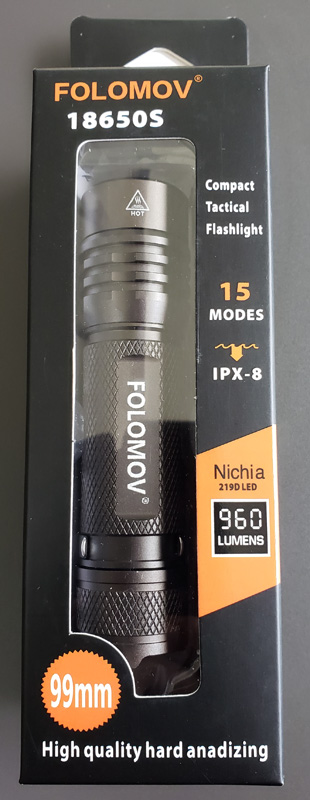
First, I’ll address what’s ON the box. Right at the bottom, it touts “High quality hard anadizing [sic]”. I think they meant “anodizing” and their proofreader needs to find another daytime gig.
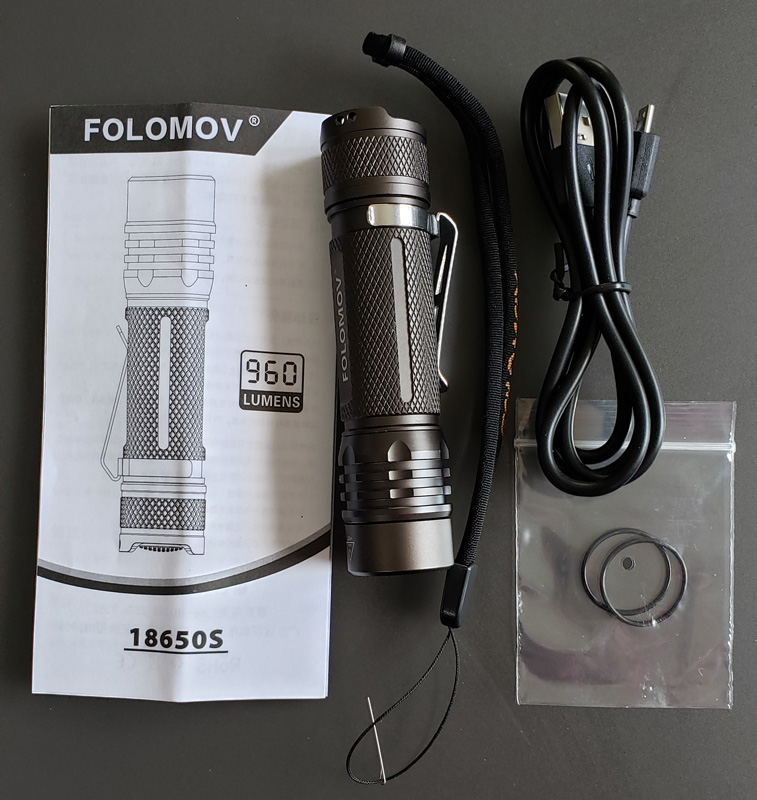
- 18650S flashlight with battery installed and belt clip attached
- Wrist strap with feed tool attached
- Two spare o-rings
- USB-A to micro USB charging cable
- Instruction guide
Hardware specs
- Item Weight: 3.5 ounces including battery
- Product Dimensions: 3.9 x 0.9 x 0.9 inches
- Finish: Military gray hard anodized with positive grip texture
- LED: Nichia 219D
- Waterproofing: IPX8 rating – full submersion more than one meter
- Light output: 0.5lm (lumen) to 960lm
- Control: single button on tail
Design and features
The flashlight is a well-made, lightweight unit. With light output from 0.5lm all the way up to 960lm, it offers the user a wide variety of lighting options. A multi-function tail cap button provides access to multiple functions: illumination mode (6 brightness levels), tactical mode, SOS, strobe, beacon, countdown, and lockout.
Setup
There really isn’t any required setup, other than attaching the optional wrist strap. But, Folomov added a really nice touch.
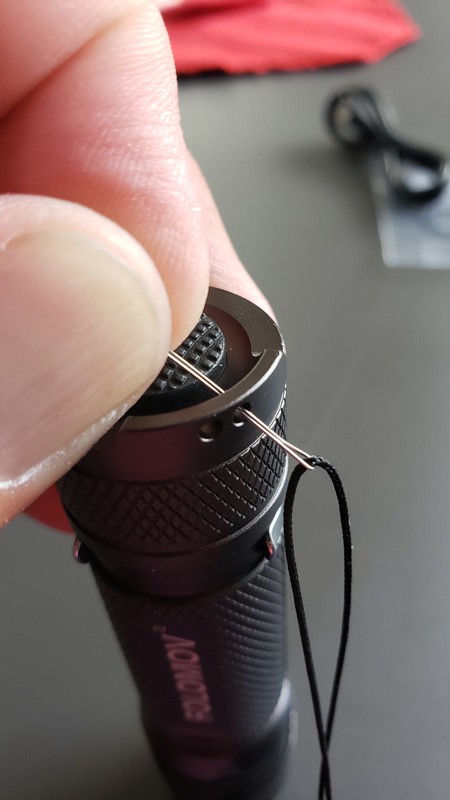
Attaching a wrist strap to most devices usually involves a lot of squinting, pinching, sometimes swearing, and frustration, trying to squeeze the strap into the incredibly small holes. Folomov solved that by attaching what essentially amounts to a very small cotter pin attached to the wrist strap. This allowed me to easily thread the strap through the holes. Very nice touch, Folomov!
So, after I attached the strap, I was all set up, or so I thought. I couldn’t get the flashlight to turn on. I tried all the different button press combos that I will get into later, all to no avail. I figured that the battery must have shipped dead, so I decided to charge it. With an IPX8 rating, I guessed there would be a pretty beefy waterproof charge door. I looked. And looked. And looked. I could not find a charge port anywhere.
Finally, I unscrewed the button end of the flashlight. It was then I learned the following two things.
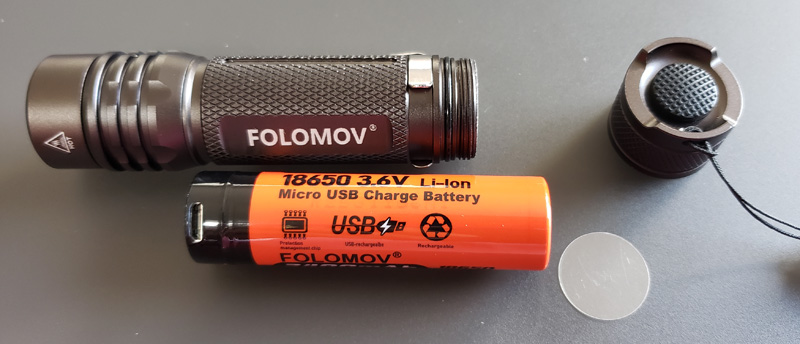
First, the flashlight shipped with a clear plastic disc covering the bottom of the battery, preventing the flashlight from being turned on during shipping. That explains why I couldn’t get it to work. No word about that in the instructions.
The second thing I learned was that the flashlight does not have a recharging port – the battery does.
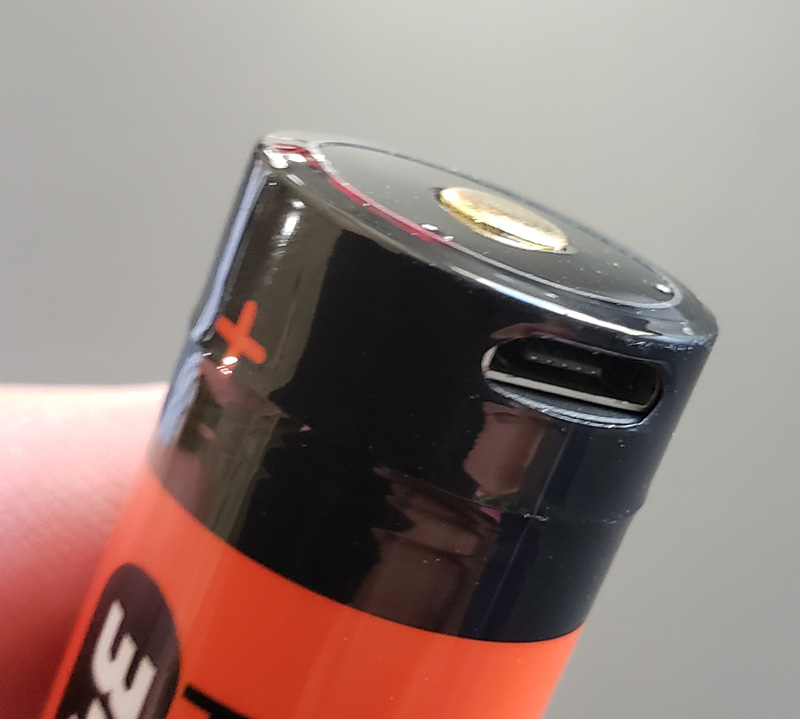
I have never seen this before, but I guess it’s a thing. Since I had it all open, I elected to give the battery a full charge.
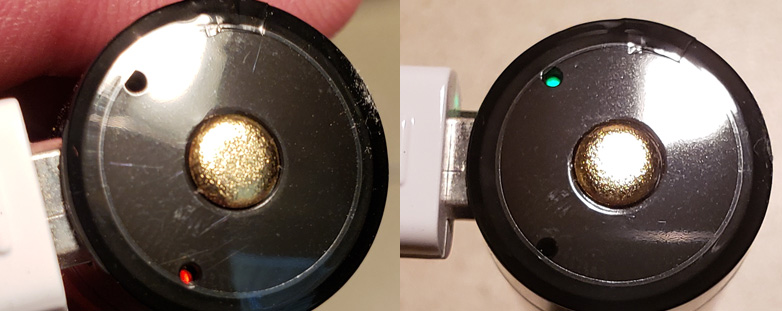
There are two LEDs on top of the battery itself. The one to the right of the charge port glows red during charging. Then, one to the left of the charge port glows green once the charge is complete. Again, nothing in the instructions about any of this.
Performance
I took the flashlight out back at night to demonstrate the different lighting modes.
All photos were taken at f1.5, 0.3-second exposure, 400 ISO, to keep the photos consistent and show the relative difference in lighting. I took two photos at each lighting level, shining the light about 15 feet in front of me, and then at a magnolia tree about 40 feet away. For each mode, I will list the light output and the expected runtime with a full battery charge.
Lighting modes
The lowest mode is Moonlight mode. To access it, hold the button about 0.5 seconds. The same to turn it off.
When in lighting mode, quick-pressing and releasing the button turns the light on to the last-used mode. Repeated presses cycle up and down through the modes, lowest, low, medium, high and turbo. A 0.5-second press turns the light off again.
Moonlight mode (it didn’t light the tree enough to even show that photo)
- 0.5lm
- 350 hours
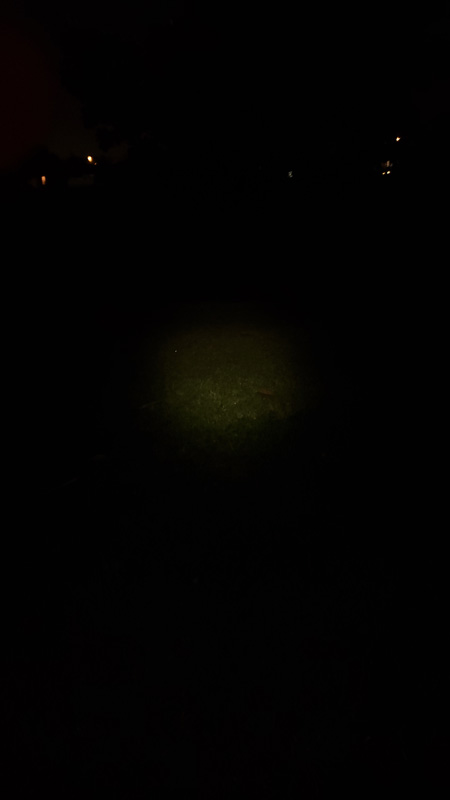
The light was visible at about 15 feet, but just a faint circle. Moonlight mode is essentially a night light.
Lowest mode
- 10lm
- 150 hours
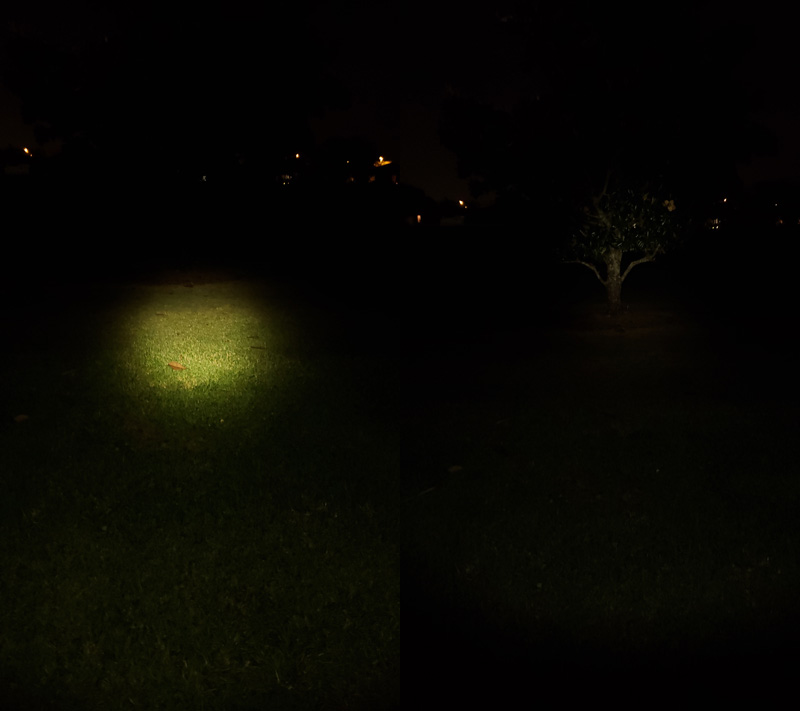
The circle was clearly visible, and I could just make out the trunk of the tree.
Low mode
- 50lm
- 22 hours
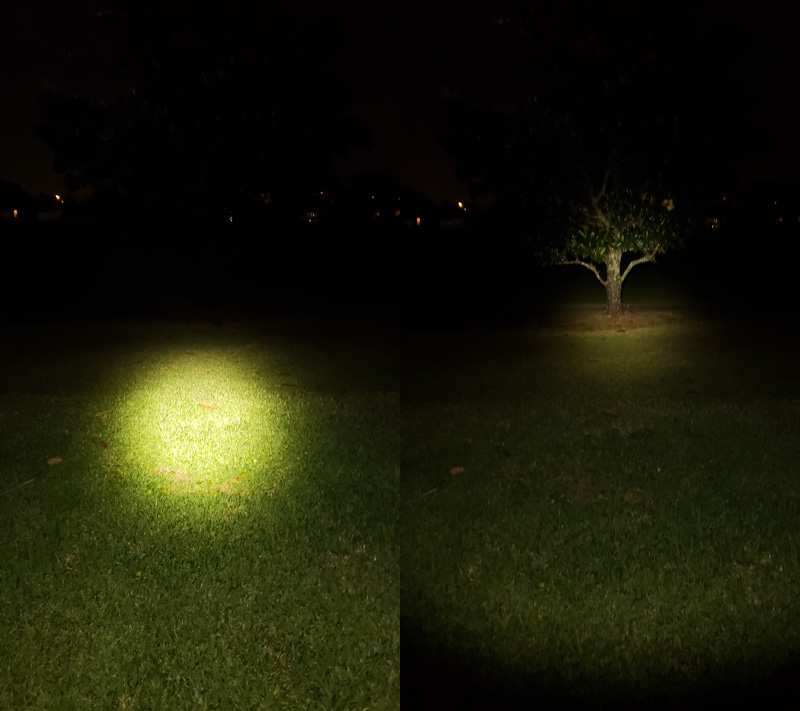
This mode produced a bright circle and illuminated the area around it. Shining at the tree illuminated branches.
Medium mode
- 160lm
- 10 hours
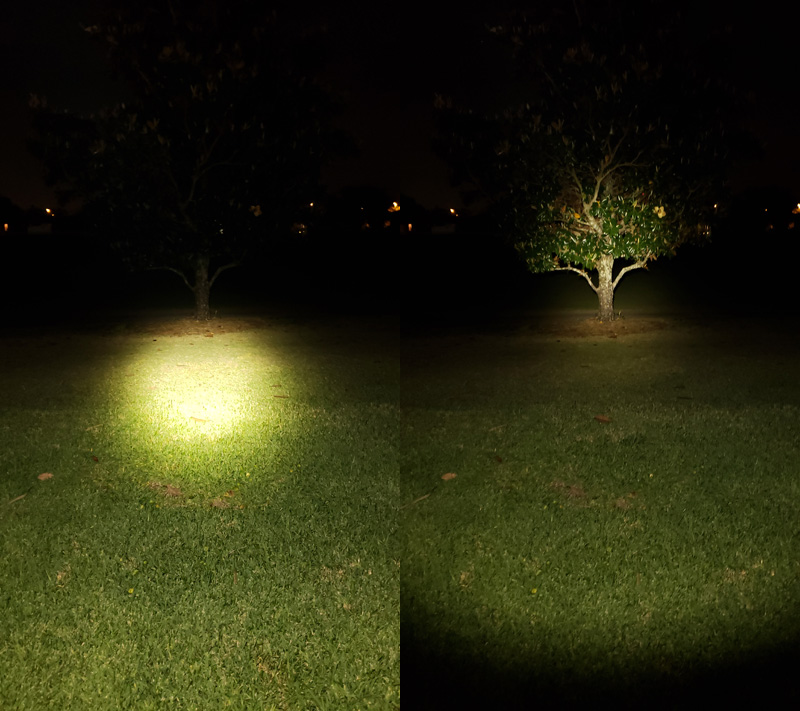
This mode provided good lighting in front of me, and could clearly illuminate the tree and its leaves.
High mode
- 320lm
- 4.5 hours
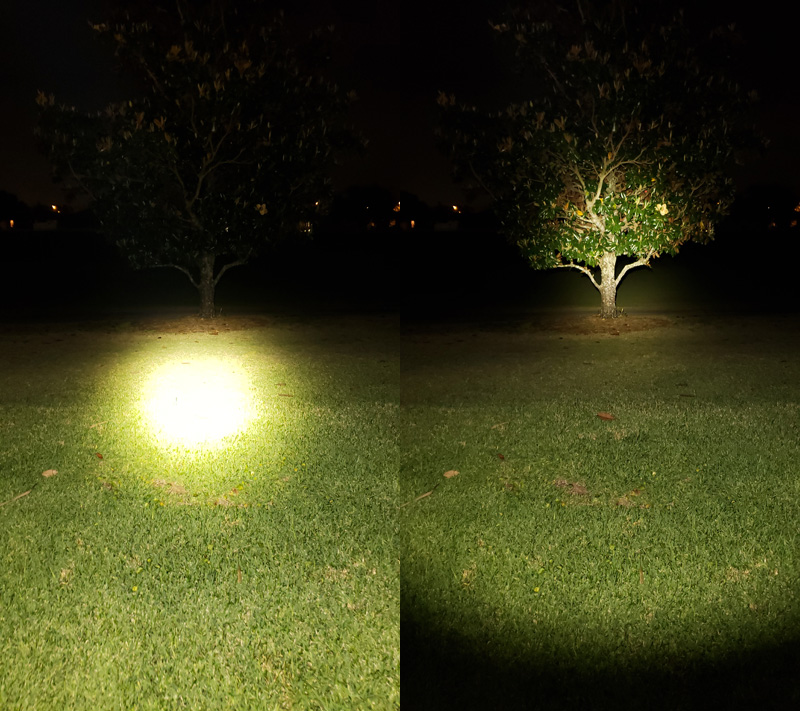
High mode illuminated the entire back yard and clearly lit the tree.
Turbo mode
- 960lm
- 4 hours
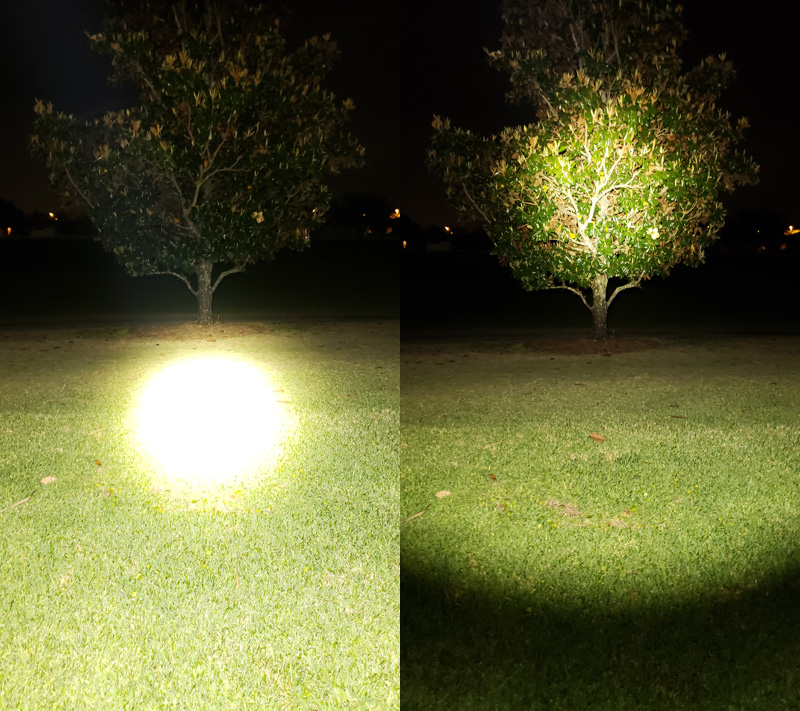
Turbo mode lit the back yard to a crazy bright level. When I shined it at the tree, it lit up the tree and the back yard.
One note – the LED end of the light has this symbol on it:
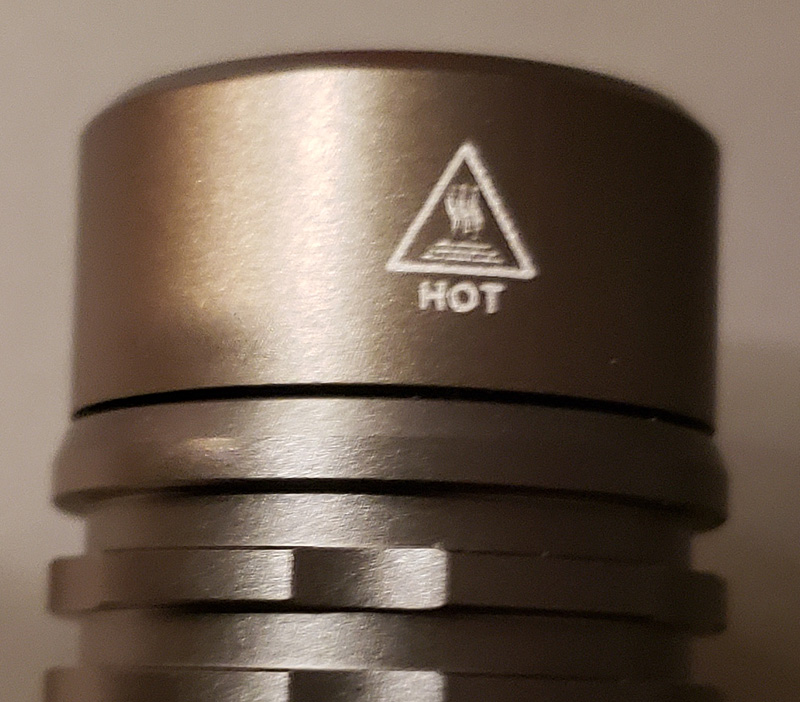
And it does get pretty warm. I left the light on turbo mode for about ten minutes, and while it was pretty toasty, it didn’t feel dangerously hot, and the body of the light did a good job dissipating the heat.
Other modes
With the light off, a double-click of the button turns on strobe mode. The strobe flashes at the full 960lm brightness and is quite blinding. This is a tactical mode and can be used to confuse an attacker. When the strobe is flashing, a double-click flips to SOS mode, where the light pulses to produce an appropriate SOS emergency flash repeatedly. Another double-click flips to beacon mode, where a 50lm light pulses every five seconds or so as an emergency locator.
Speaking of tactical…quick-clicking seven times toggles from lighting mode to tactical mode. When you do that, the light flashes to confirm the change. When in tactical mode, the button can be held to for instant and temporary access to turbo mode. When you release the button, it turns off. A double-click turns on strobe mode. A long-press turns it back off again. Seven more clicks flip back to lighting mode, again confirmed with a flash.
The light also supports a countdown timer. With the light on, three quick clicks enables a three-minute timer. The light flashes once to confirm. Once set, the light will turn off automatically at the end of the countdown. Once the timer is set, three more clicks add another three minutes. You can do this for up to a 30-minute timer before the light automatically turns off.
Finally, with the light off, three quick clicks enables lockout mode, making it so the light cannot be turned on. Three more quick clicks disables lockout mode, making the light usable again.
What I like
- Well made and nicely finished
- Excellent variety of lighting modes
- Terrific light output for the size
- Its design includes flat side area, preventing it from rolling away
- Including the strap-threading tool is a really nice touch
What needs to be improved
- The English instructions really need to be rewritten as they are a grammatic nightmare, and in some cases, just plain wrong or missing
- Accessing the wide variety of modes through a single switch, via 1, 2, 3, or 7 clicks is a bit confusing
Final thoughts
In another nod to the proofreader needing to be let go, all the runtimes listed in the instructions showed “M”, not “H”, so if you believe the instructions, it will only run for four MINUTES on turbo. But in my testing, that is more of a typo than anything. The runtime specs on the box itself are correct, even though they differ from the same chart of runtimes in the instructions.
But, I can forgive typos and grammar if the product is good, and this product is good. The wide variety of lighting levels make this a very flexible flashlight. The tactical modes make it a good tool for personal protection or emergency use. It’s light enough to carry every day but sturdy enough to stand up to rugged use.
With up to 960 lumens of blinding light, it’s a good deal at its price point.
Price: $27.65
Where to buy: Amazon
Source: The sample of this product was provided by Folomov.
Filed in categories: Reviews
Tagged: Flashlight
FOLOMOV Tactical Flashlight 18650S review originally appeared on The Gadgeteer on April 22, 2019 at 10:00 am.
Note: If you are subscribed to this feed through FeedBurner, please switch to our native feed URL http://the-gadgeteer.com/feed/ in order to ensure continuous delivery.


















































